Hever Castle: In Search of the Boleyn Family Home
Hever Castle is at the top of practically every Tudor lover’s wish-list of places to visit. In this blog, we go in search of the sixteenth-century castle with our tour guide, Owen Emmerson, House Manager at Hever. Join Owen and me as we explore the castle and recreate the rooms as they were during Anne Boleyn’s lifetime. Let’s go!
Note: This blog is based on a transcript of September 2019’s episode of the Tudor Travel Show. If you wish to listen to this podcast, follow this link.

Sarah:
Hi, Owen! Thank you so much for inviting us here to see Hever Castle on such a glorious day!
Owen:
It’s wonderful, isn’t it? It’s so lovely to welcome you.
Sarah:
This place is such a mecca for so many Anne Boleyn fans. You’re here to take us into all the nooks and crannies. I am looking forward to hearing stories of the castle and bringing this place to life. Before we go inside and start our tour, maybe you could give us a little potted history of Hever Castle.
Owen:
We believe that Hever was built around 1271; that’s when a licence to crenellate, that is to embattle, the manor here at Hever was granted to a man called Stephen de Penchester. He was heavily involved in nearby Penshurst Place. William de Hever is also in the frame and is believed to have been the builder of the castle. However, there is some mystery about the origins of Hever – and the role these two gentlemen played. We’re hoping to clear that up in the near future. Then the castle goes to a Kentish family called the Cobham family, who are very influential. Multiple owners follow, owning the castle over very short periods until, of course, Geoffrey Boleyn, who is Anne’s great grandfather, purchases Hever.
Sarah:
And he was the Lord Mayor of London?
Owen:
He certainly was, in some ways, his story mirrors that of the Astor family, who purchased Hever in the nineteenth century, and who restored the castle.
Sarah:
You are referring to William Waldorf Astor, who saved the castle. It was in quite a ruinous state at the time.
Owen:
Absolutely! Geoffrey Boleyn makes his fortune through work – like the Astors. He’s a man that has worked his way up and built a family fortune. And what a fortune it was to have purchased Hever Castle! It then gets passed to William, Anne’s grandfather, and then to Thomas Boleyn, her father. We believe that Anne arrived here at Hever in about 1505, probably at around the age of five. Hever becomes her childhood home, her safe haven.
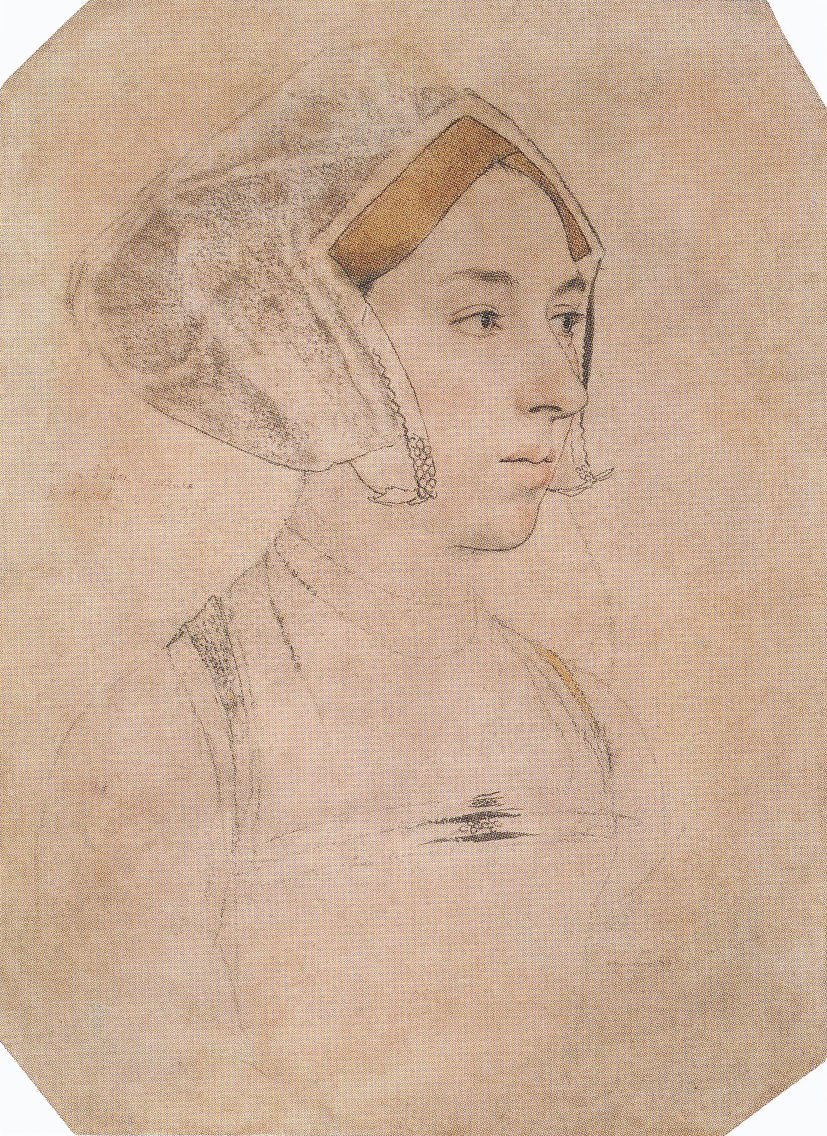
Sarah:
What about later in the Tudor period? After the fall of the Boleyns, I know that Anne of Cleves came to live here at some point. How did that happen?
Owen:
So, after the death of Sir Thomas Boleyn, the property passes very briefly to James Boleyn [Thomas’ younger brother]. He then sells it, or swaps it, for a property in Norfolk. Hever then becomes part of the Crown Estate and therefore is owned by Henry VIII. After the annulment of his marriage to Anne of Cleves, the property is given to her as part of her divorce settlement. She’s allowed to rent it, although Henry pays her rent. It is an agreement that is put in place for her lifetime. Subsequently, we know that Anne spends a lot of her time here at Hever.
Sarah:
Does she indeed? Because that’s something I haven’t researched a lot and it was one of my burning questions for you today! So, how much time did Anne spend here?
Owen:
It’s her country seat. We know that just after the annulment, she doesn’t spend a tremendous amount of time here, but increasingly, as her fortunes deteriorate after Henry VIII dies, the new king and Council strip away a couple of palaces from her – Bletchingly and Richmond. After that, Anne increasingly spends her time here at Hever.
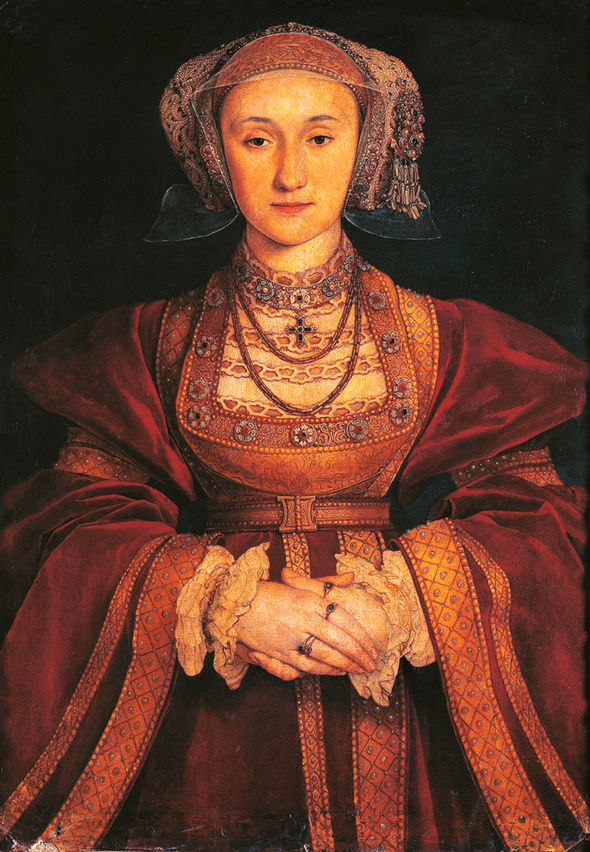
Sarah:
That’s really interesting! I know I’ve seen at least one letter from her signed ‘my poor house at Hever’. Are there more?
Owen:
There certainly are – and a lot of them are sent to Cleves. They are located in the Cleves archive.
Sarah:
So, she’s writing to her family at home?
Owen:
Yes, absolutely.
The Gatehouse at Hever Castle
Sarah:
So this is the gatehouse, isn’t it? Is this the oldest part of the castle?
Owen:
Yes, it certainly is. As we pass under the gatehouse, we are passing through the medieval part of the castle. Once inside the courtyard, we are into the realm of Geoffrey Boleyn’s house, which he inserted between the curtain walls and this medieval gatehouse. It was renovated by the Astors in the late nineteenth and early twentieth century, but this is essentially the Boleyn family home.
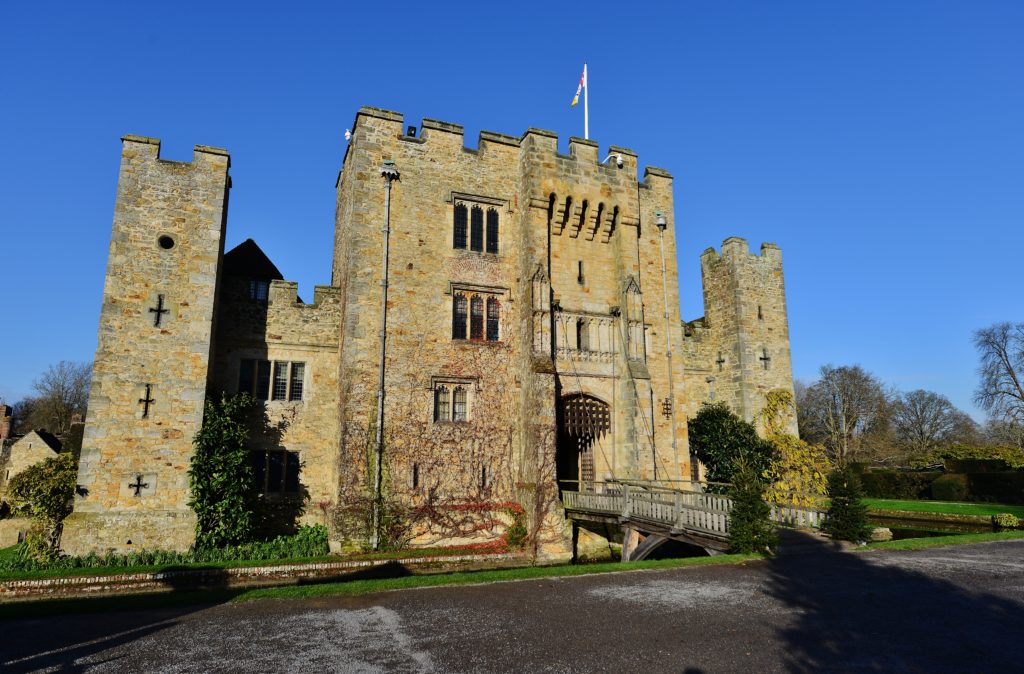
Sarah:
And is this how these courtyard buildings would have looked in Anne’s time? Are there any features that are different from how she would have known it?
Owen:
Yes, the Astors restored a lot of the wood – and the patterning we know would have been different. Also, the height of the building has been modified. For example, there are three levels when initially there would have only been two.
Sarah:
I see. So, it was a little bit squatter in the sixteenth century. And am I right in thinking that in the medieval period there would just maybe a simple hall beyond, on the far side of the courtyard from the gatehouse?
Owen:
Absolutely, we even think there could have been what is called a loggia. This is defined as an open space with a gallery above it. Early long galleries had an open space below them and then a simple gallery above, which is the arrangement we have here with the staircase gallery. I say there’s every possibility that the space directly in front of the hall was arranged in that way. Then, off the low end of the hall, on the right-hand side was, of course, the Tudor kitchen.
Sarah:
Okay, well maybe we should go and look at that right now…
The Inner Hall
Sarah:
This is such a beautiful room now. It’s all sumptuously panelled and there are all these elaborate wooden carvings and fabulous paintings, but in the sixteenth century this is not how this room would have been at all, is it?
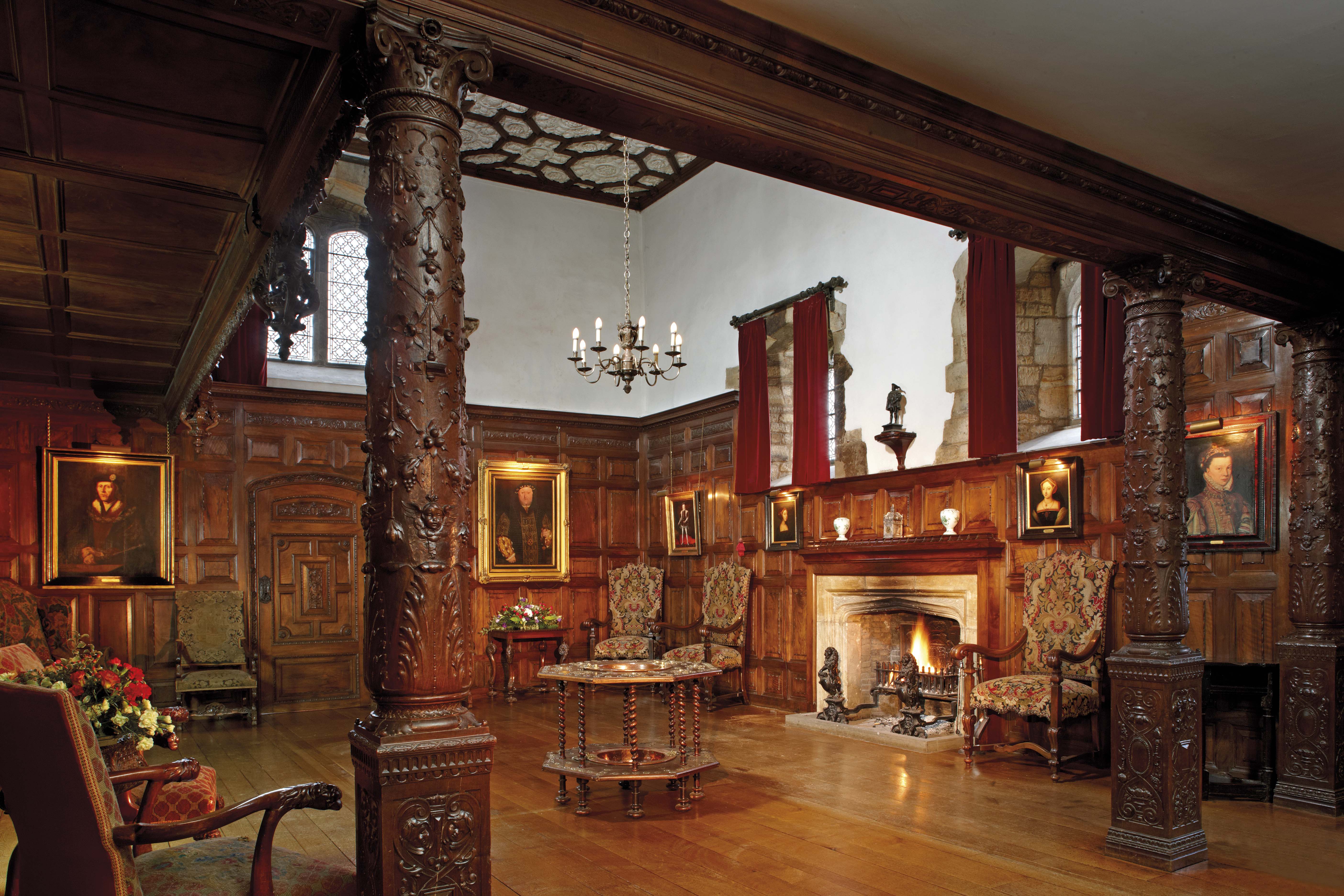
Owen:
Not at all. The space we are standing in is deceptive. The elaborate decoration belies its humble beginnings because this space was once occupied by the Tudor kitchens. This was the domestic part of the castle. This part of the castle certainly wouldn’t have been frequented by the Boleyns themselves. Although I’m sure children used to sneak in – as children do!
Sarah:
So my understanding is that there would have been a passage from the Great Hall through into the kitchens.
Owen:
Yes, you can see the passageway still here. [Indicates towards a door disguised in the wall pannelling].
Sarah:
Oh, that is the passageway, behind that door?

Owen:
Yes, we’ve got some secret doors here, hidden in the panelling. So, that would have been the passage through into the great hall. Also, we would have had massive fireplaces over here [indicates to the wall opposite]. This would have been a very different space indeed.
Sarah:
Would this have been the size of the kitchen? I imagine it must be because of those thick walls! You couldn’t expand any further outwards.
Owen:
Absolutely, this is a small family home. The room now is slightly larger than the kitchen would have been. It’s perhaps a shame that we don’t have the original Tudor kitchen today, but we do have this fantastic reception room.
Sarah:
I must admit, the Astors did do a good job. Even though the interiors aren’t authentic, they did an excellent job …
The Drawing Room
Sarah:
We’ve come into this elegant room. Whenever I walk into this room, it just takes my breath away because it’s so beautiful; it’s very feminine. There is this gorgeous inlaid panelling and this amazing moulded ceiling. But when I was doing my research for ‘Le Temps Viendra’ and also for ‘In The Footsteps of Anne Boleyn’, my understanding was that the family didn’t use this side of the castle as a living space. So, what do we know about what was here?
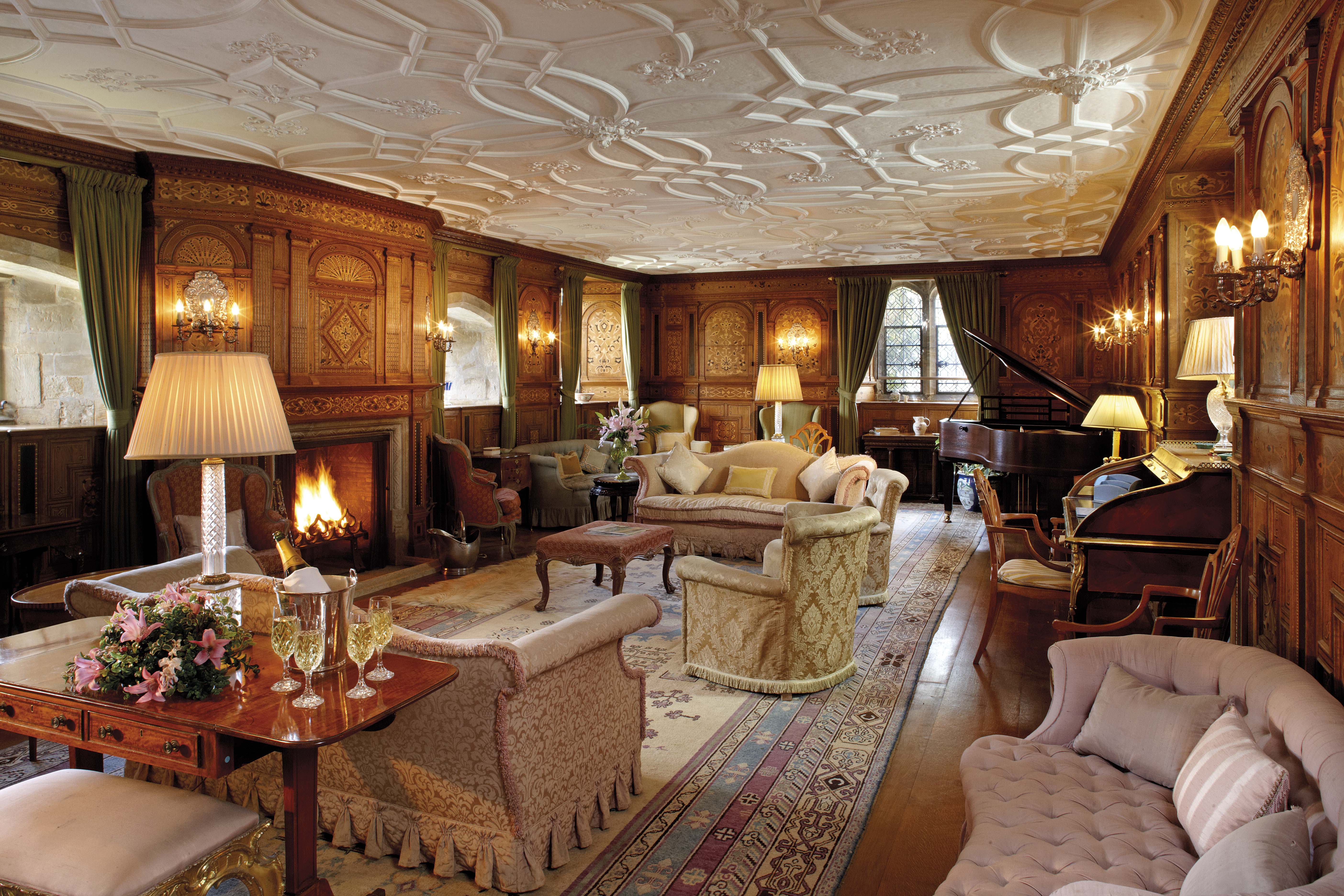
Owen:
You’re completely right. We’re standing in what was the larder for the Boleyn’s family home. Behind us would have been another larder and beyond that, the dairy. We’re inside the thick, stone walls of the castle. So, it’s a very cool place. Perfect for the storage of food. Incidentally, we do have a very crude drawing of what was here. It was a domestic space, just off the kitchen. It’s a place that the Boleyns wouldn’t have lived in on a day-to-day basis.
Sarah:
Yes, what a fantastic transformation William Astor has effected here!
Owen:
Yes. He’s transformed this from a place of labour into a place of leisure – because he does not have a need for that kind of functional space.
The Parlour
Sarah:
Owen, we’ve come across to the opposite side of the castle. Is this the east or west wing?
Owen:
We’re in the west wing of the castle now. We’ve just walked through what is now the library. In the sixteenth century, it would have been the chatelaine’s office. So, we’re in a very privileged part of the castle; we could now consider ourselves to be valued guests because we are entering the private sanctum of the Boleyns.

Sarah:
The chatelaine’s office was the territory of Elizabeth Boleyn. So, if her husband was away at court or on a diplomatic mission, that’s where she would run the castle from?
Owen:
Absolutely. That’s where the finances of the castle and the estate were conducted. And here, in the parlour, we have entered a private, family space.
Sarah:
Right, so to orientate everyone, if I put my hand on this wall here, on the other side of the wall is the Great Hall where we’ve just come from. We’re supposing that there would have been a doorway that led through directly from the Great Hall into this private space. This is a place people would come to retire, isn’t it, and to have some privacy?
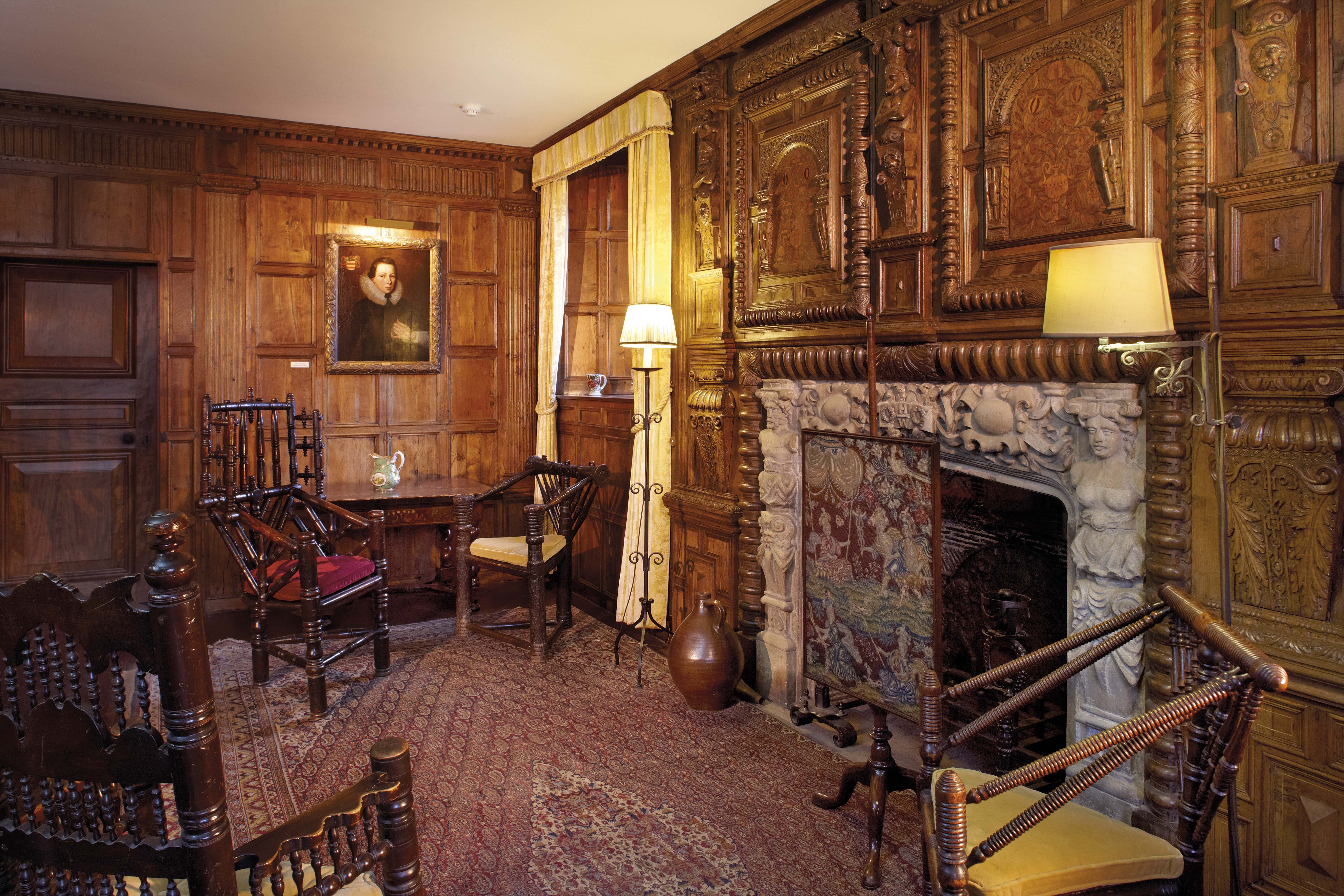
Owen:
Absolutely, this room defines the Tudor period. It is also a symbol of the status of the Boleyn family. The existence of this room in the sixteenth century is Thomas saying that ‘look, I can afford private space’. This was something that wasn’t expected in the medieval period of a man of his status. This is really saying he’s risen up in the world, and he’s also telling his visitors that he can afford for his women not to work. This chamber is where they would have done the clean work, such as blackwork.
Sarah:
Blackwork being that beautiful embroidery on cuffs and collars that we see in paintings of the period.
Owen:
That’s right. It’s considered a leisure pursuit. It’s not a pursuit of labour for a woman of Elizabeth Boleyn’s status.
Sarah:
I love coming here and thinking of the crackling fire in winter, of the family arriving back here, having been out riding in the park. They come in here, and they’re pulling off their gloves, and they’re talking about the hunt or local gossip. Goodness knows what conversations happened in this room!
Owen:
Oh, many, many, many!
Sarah:
So with that, we’re ready to go upstairs to see some of the upper chambers of the castle.
Owen:
Let’s go upstairs!
Anne Boleyn’s Bedroom at Hever Castle
Sarah:
We’ve come up that lovely stone, spiral staircase into this tiny, little room, but it’s one of my favourite spaces in the castle because it’s ‘Anne Boleyn’s bedroom’. And the most obvious question is, is it, was it?
Owen:
Well, what I can say is it’s got a very long tradition of being called ‘Anne Boleyn’s bedroom’, and it certainly would have been a space intimately known to Anne because we are now above the parlour, and therefore, we are in the Great Chamber. This is the solar, the sunroom or the private room.
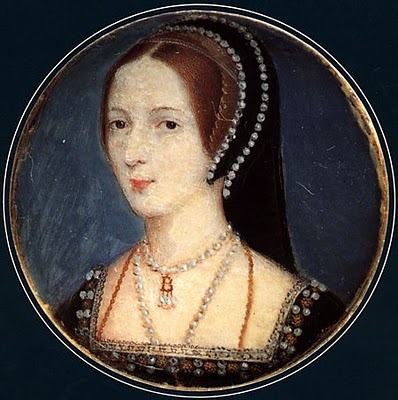
Sarah:
So, that chamber stretched right across this west wing, didn’t it?
Owen:
Yes, right across the west wing. This is the inner, the most private sanctum of the Boleyns. You’re very privileged people indeed if you are allowed into this space. You’re very close to the family. This room is really where they spend all their time at Hever.
Sarah:
If they’re not outside hunting and hawking, in ‘town’ or visiting friends, they’re in here living and sleeping. Is that right?
Owen:
Absolutely! So, we can say this is an anteroom to the Great Chamber, which we’ll go into shortly. That is where they did everything basically; it is their private space.
Sarah:
Now, I often get asked questions about where did people sleep? Where did Anne sleep? Where did George sleep? Where did Thomas and Elizabeth sleep? My understanding is that in these large open rooms, they didn’t have separate bedrooms. You had to be right at the top of the aristocratic heap to have a bedroom. More likely the Great Chamber would be partitioned, and everybody slept in one space. Is that right?
Owen:
Very much so! During the medieval period, servants bedded down in the Great Hall. The same concept is applied to the Great Chamber. Almost certainly, the lord and lady of the house would have had separate bedding down space, but the children would have had semi-permanent beds in that same area, often partitioned off with tapestry. So, the Great Chamber is a multi-functional space that is re-purposed throughout the day. So, for example, it also serves as their private dining room, where the Boleyns dined en famille.
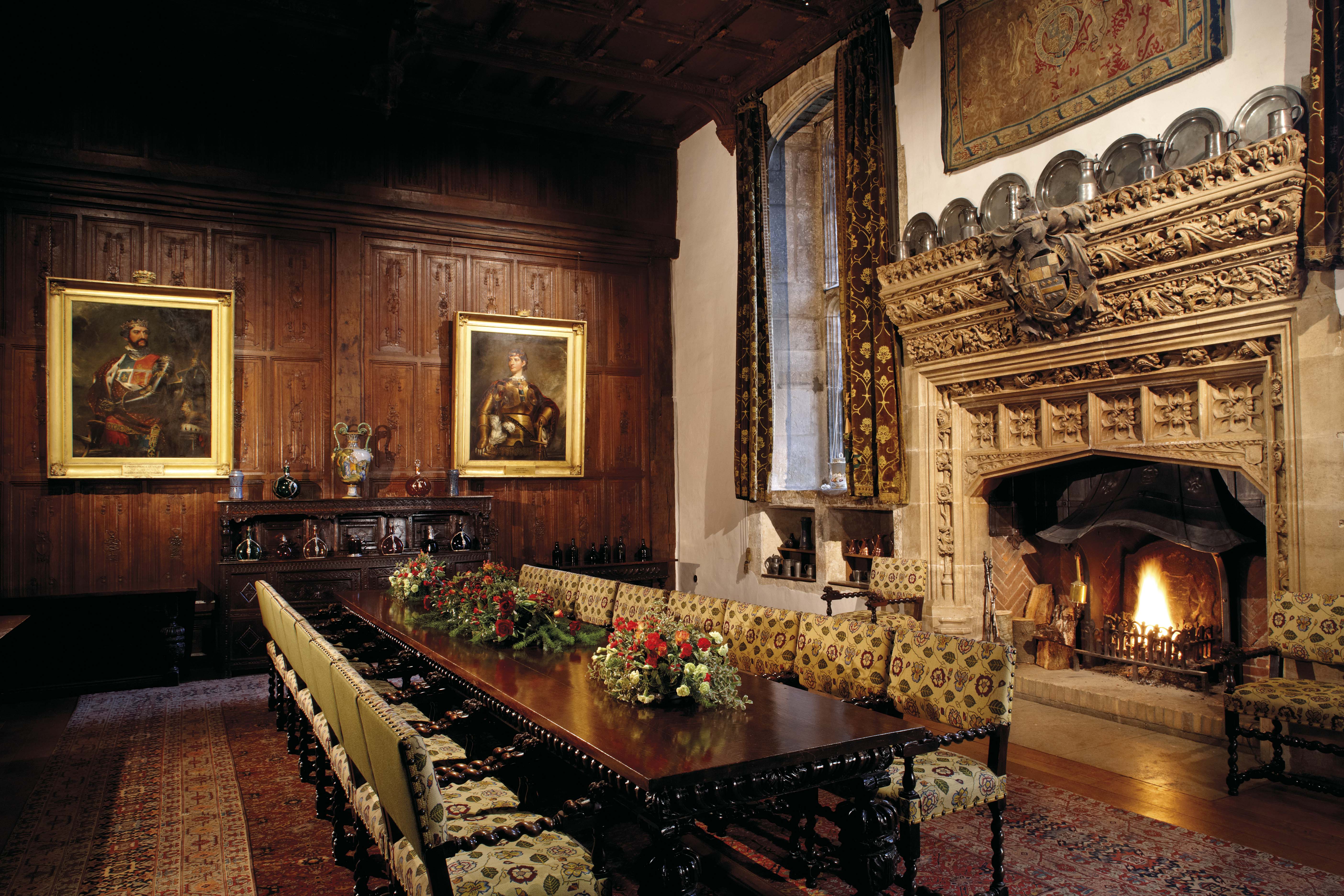
Sarah:
So, the use of this space is shifting all the time. Would the servants have come up and put the hangings up, and then moved them away, during the day?
Owen:
Yes, absolutely! It’s a multi-functional space. It’s very economical. You only have to warm this one area for the family. So, if you want to walk in Anne Boleyn’s footsteps, you’re in the right place.
The Great Chamber / Book of Hours Room
Sarah:
Having left Anne Boleyn’s bedchamber, we walk through into this much larger chamber. As you were saying, this was once the Great Chamber. It was part of the solar that extended across this entire wing. It’s been divvied up now, hasn’t it, into a smaller chamber, but what else can you tell us about this room?
Owen:
So, I told you that originally, there were only two floors to this castle. This chamber formed part of the upper storey. Initially, it would have had a much larger, vaulted ceiling. Of course, we should also remember that this was also Anne of Cleves’ Great Chamber. This room is where she spent most of her time while at Hever Castle.
Sarah:
I’ve seen an old photo of the ‘Anne of Cleves chamber’ online, and this space was being used as a bedroom.
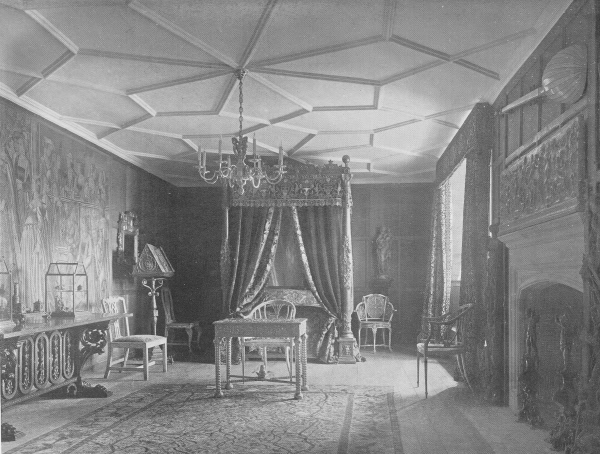
Owen:
Yes, it was used as a bedroom during the Astors’ time. But in the sixteenth century, it was the main living area. So, when Anne of Cleves was writing those letters from Hever Castle back home to Cleves, this is where she wrote them from.
Sarah:
Owen, there are a couple of fantastic artefacts in this room, aren’t there?
Owen:
Yes, there are.
Sarah:
There are two beautiful books of hours displayed in this room. These were once owned by Anne Boleyn. Perhaps we will talk about them another day, as they deserve a lot of attention. But, in the meantime, another artefact that always catches my eye in this room is this incredible tapestry. It dates from 1520, right?

Owen:
Yes, the 1520s, that’s correct.
Sarah:
Do you want to tell us as much as you know about it?
Owen:
Sure. Well, we have a theory about this tapestry. It’s a working theory. It’s one that Alison, our curator, and I are speculating about at the moment. So, traditionally, this was thought to be a tapestry depicting the marriage of Mary Rose, Henry VIII’s younger sister, to Louis XII. There’s always been a question mark over that because it’s a fruitless marriage. The union only lasts a short period of time, and as we know, tapestries take a long time to create. So we’ve always wondered why a tapestry that might have taken six years to create would have been commissioned to commemorate a marriage that lasted less than six months. There is a clue, however, and it’s just here [Points to some indistinct wording woven into the tapestry. It is located over the gown of the principal female figure]. This says ‘Esther’.
Sarah:
Gosh, I’d never noticed that!
Owen:
And the crown of Esther, if this is indeed her, is very similar to the crown worn by Esther in Henry VIII’s tapestries of the same subject. Esther is quite pertinent to Anne Boleyn’s story because, of course, we know that John Skip, her almoner, evokes the tension between Esther, the Jewish Queen and Hammam, in a service on Passion Sunday, 2 April 1536. Hamman is trying to have all Jews killed and to bring down the Jewish Queen. Esther appeals to her husband, the king, and subsequently, Hammam is hanged. This is a reflection of the tension between Anne and Thomas Cromwell at the time, just before Anne’s downfall. Cromwell would have understood the meaning of the sermon and seen it as a threat – a warning shot across his bows.
Sarah:
Well, that sheds a whole different light on this tapestry, doesn’t it?
Owen:
It’s a work in progress, but yes, these things are starting to unravel.
Sarah:
So, even if this is depicting the story of Esther, do we still believe that any of the Boleyns are portrayed in this picture?
Owen:
Well, traditionally, if this is the wedding tapestry, then Anne is said to be depicted somewhere in the scene. Some people say it’s this young lady over here [indicates to a lady in red directly behind the principal female figure] because we know that she’s in attendance at that marriage, but who knows? Everyone has their own theory.

Sarah:
They do – and I have mine, which is that lady in the blue. She looks to me exactly like the portrait, but there you go!
Owen:
She’s got her nose. I’ll give you that!
Sarah:
Maybe we will know one day. We’re always saying that we’ll never know, but things are coming up all the time, aren’t they?
Owen:
Indeed. Let’s wait and see!
The Staircase Gallery
Sarah:
This is the beautiful Staircase Gallery at Hever Castle. It’s just filled with light. It was such a trendy feature in its day, wasn’t it? I guess it’s quite expensive to build too. What can you tell us about it?

Owen:
Well, we know that galleries are a status symbol, as well as being a practical way of linking two wings of a medieval property together. If this was built by Thomas Boleyn, as it is believed to have been, it’s one of the earlier galleries to have been built in England. Of course, there’s another one upstairs which, again, has a question mark over its date of construction. However, originally, this is where the Boleyn staircase would have opened out at the head of the stairs. Hence the name: the Staircase Gallery.
Sarah:
Yes, because the Astors changed the original layout of the staircase, didn’t they? It is now accessed via the Inner Hall, but in Anne Boleyn’s day, the foot of the stairs was right next to the front door.
Owen:
In a sort of ‘u-shape’, yes.
Sarah:
So, there would once have been an opening somewhere here in this gallery. It is the principal access point from the ground floor. Also, as far as we know, Thomas Boleyn put in all the glass here, and that was, of course, a costly undertaking at the time, wasn’t it?
Owen:
Hugely so. Glass was a portable thing at that time. If you were particularly wealthy, you might well even travel with your glass. The property you have just left behind being crudely shuttered up, leaving a very drafty house for the poor servants whose job it was to retain it in your absence. But yes, this gallery is a stunning status symbol. It’s a way of progressing with your visitors to your most important room which is, of course, the long gallery upstairs.
The Henry VIII Bedroom at Hever Castle
Sarah:
Having walked down the Staircase Gallery, this brings us back to the east side?
Owen:
We are indeed!
Sarah:
So, we’ve come along the Staircase Gallery, back across the castle, and now and we’re in what is called the ‘Henry VIII bedroom’. This is a fine-looking bedroom with this really magnificent bed. But, so many people ask me: ‘Did Henry VIII stay in this room?’ I don’t think he did, but you tell us the story.

Owen:
I’m going to tell it from my perspective as a historian. We know that Henry almost certainly would have visited. For example, we see that he’s staying at his property, Penshurst Place, in 1528. We know that Anne is here at Hever Castle at the time. This is when the king is pursuing her. It’s almost inconceivable that he wouldn’t have used this opportunity, and this more private location, to come and visit his sweetheart. But would he have ever stayed at Hever Castle? I’m not so sure. And the reason I say that is because he owns Penshurst Place. He can lodge most of his court there, all of his retainers, and all of his security.
Sarah:
And it’s only four miles down the road. No distance at all for the Tudor king!
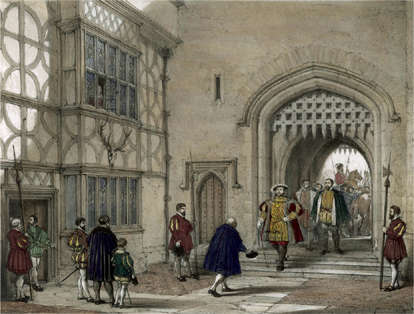
Owen:
Right. So, did he stay here? It’s possible. We know that Henry does stay at properties of this size. However, as importantly, we also know that he would have lodged in the most important rooms at that time, which, at Hever, was the Great Chamber – not this room. Also, we know that the Boleyns have two properties. It is possible that they moved out allowing the king to stay here. I’m open to the idea, but we can’t prove it either way.
Sarah:
Well, there are lots of myths in Tudor history, and sometimes, as much as we’d like to believe something, we might have to accept that maybe it’s just not quite right!
Owen:
Indeed! It might smack slightly of the so-called ‘Anne Boleyn room’ in the Queen’s House at the Tower of London. This was created in the Victorian era for a public who just wanted to see the spaces that Anne spent time in. They really weren’t prepared to accept that these spaces didn’t exist anymore.
Sarah:
So, when we come and see the Henry VIII bedroom, we have to enjoy it for what it is, which is an exceptional recreation of a high-status, Tudor room. However, we’ve got this ornate bed, though, haven’t we? And that is a genuine Tudor artefact. What can you tell us about the bed?
Owen:
Yes. A lot of research is being done on the bed by renowned architectural historian Jonathan Foyle. He has demonstrated that there is an ‘ER’ on the bed. So, the question is, is it Edward Rex or is it Elizabeth Regina? We don’t know yet, but it’s undoubtedly a Tudor mystery waiting to be solved.
Sarah:
And you can see by the carving, it’s full of symbolism. I’m sure Jonathan’s going to unpick all of that – and that this bed has got a whole story to tell us.
Hever Castle’s Long Gallery
Sarah:
This gallery has got to be one of the most breathtaking spaces at Hever Castle: it’s the gorgeous long gallery. Of course, totally de rigeur for any Tudor house. So, what’s the history of this space?

Owen:
We believe it’s a Thomas Boleyn insertion. To have a space like this in your house is a huge status symbol. In fact, it might be one of the earliest long galleries in the country. It’s a place of leisure. This place is where the Boleyns would have done their daily exercise if the weather was inclement. It’s also a place to hang your most valuable possessions, your paintings, and display other items of value and of interest to your guests. It’s traditionally thought this is where Henry would have held court when he visited, and it’s a remarkable space. Astor truly elevated it with this fantastic plasterwork on the ceiling. It’s really is very special.
Sarah:
To insert the gallery, Thomas Boleyn would have lowered the ceiling in the Great Hall below, thereby reducing its height.
Owen:
Exactly, yes. This gallery spans the width of the castle. It’s above the Great Hall and also the kitchens, both of which would have had high, vaulted ceilings before the long gallery was inserted. Therefore, although we’re in the long gallery, I think this serves to demonstrate how small Hever Castle is; the length of the gallery is the width of the castle! So, it may well be a relatively large and airy space, but it demonstrates how dinky Hever Castle is as well!
Sarah:
You are always changing what’s in this space, aren’t you? Quite recently, you opened a new exhibition of paintings. There are some truly exquisite portraits in here. So, maybe we should wander over and have a look at a couple of them. [We head over to look at some of the paintings] No visit to Hever Castle would be complete without us coming to look at a portrait of Anne Boleyn. So, here’s the lady herself. Owen, what can you tell us about this particular picture?

Owen:
Well, it’s the iconic, so-called ‘Hever Rose’ portrait. It’s the one thought to be most like her. It’s something of a mysterious object. It wasn’t purchased by the Astors or indeed the current owners, the Guthrie family. However, we know that a portrait of Anne was here for most of the castle’s history (at least since the sixteenth century), but we have very little provenance for it. Alison, the curator of Hever Castle, is hopefully going to be able to test the panelling by using dendrochronology. By doing so, we are hoping to place it in the timeline of the known portraits of Anne. Of course, the National Portrait Gallery portrait was tested quite recently. It was found to be Elizabethan. We are hoping that ours might be earlier!
Sarah:
Well, there you go! We’re going to have to watch this space. More interesting things are coming our way. It’s all happening here at Hever! [We move to the alcove at the end of the Long Gallery] Well, thank you so much for showing us around. This has been an amazing experience and so much fun. It’s wonderful to finish our little tour here because the area that we are standing in is part of the end of the long gallery, isn’t it? It is supposed to be very historic.
Owen:
Absolutely. This is traditionally where King Henry VIII is said to have held court. Any visitors who wanted an audience with the king would have had to process down the length of the gallery to see him.

Sarah:
You can imagine him sitting here in all his splendour, with his jewels and fine clothes. Oh, it must have been amazing! But sadly, we will have to finish here. This concludes our tour of the Tudor part of the castle. So, once again, it’s an enormous thank you from me.
Owen:
You are so welcome. Thank you.
A Note of Thanks
A BIG ‘thank you’ to Owen Emmerson, House Manager at Hever Castle, for sharing his extensive knowledge about the history of Hever. Thank you also to Helen Francis, who made our visit possible, as well as all the other members of staff at Hever, who were so incredibly accommodating.
If you wish to book tickets for Hever at Christmas or look ahead to future events at the castle, click here.
You can also read more about a day in the life of Anne Boleyn in one of The Tudor Travel Guide’s popular post: The Life of Anne Boleyn: When the Ordinary Feels Extraordinary, or read my fascinating theory about Anne Boleyn’s state of mind during her last days and hours on Earth in Anne Boleyn’s Execution: The Surprising Truth about her Last Moments.

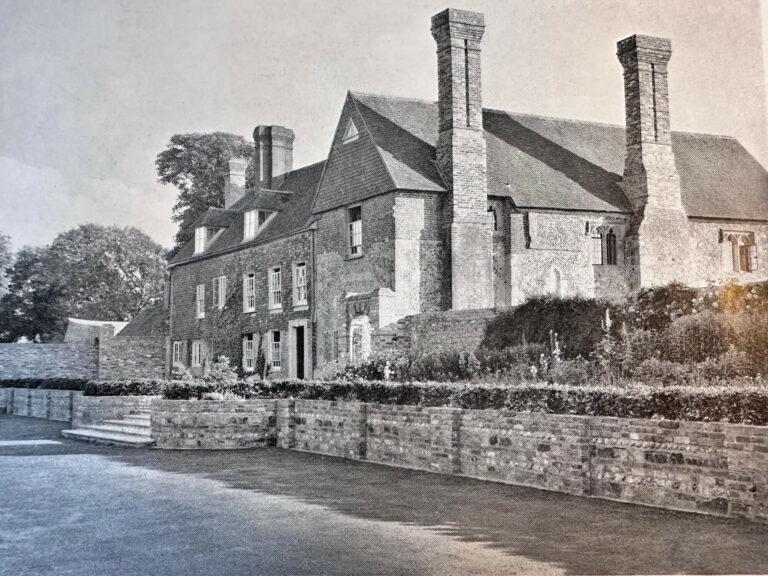
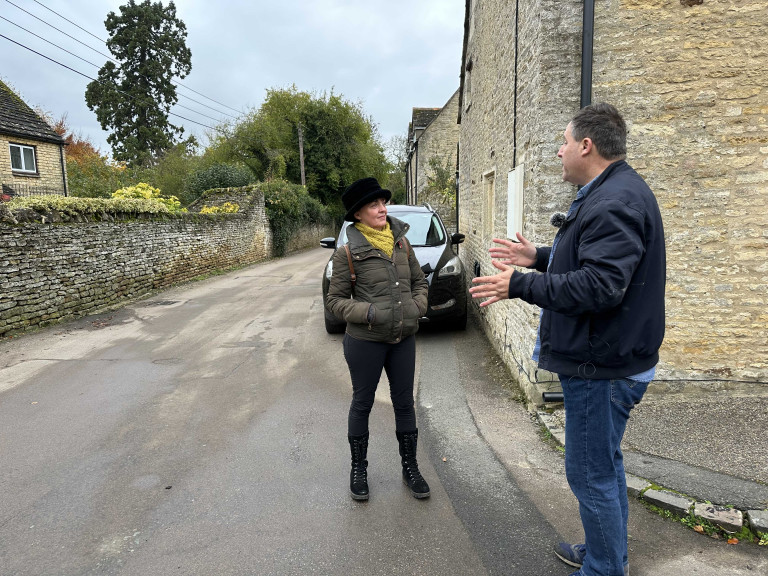
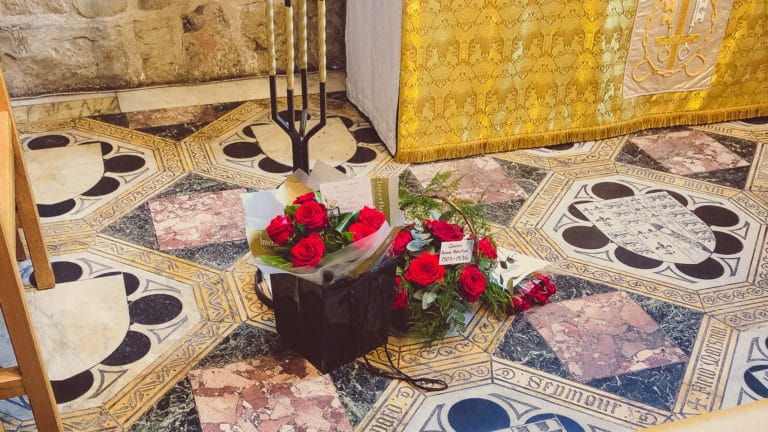
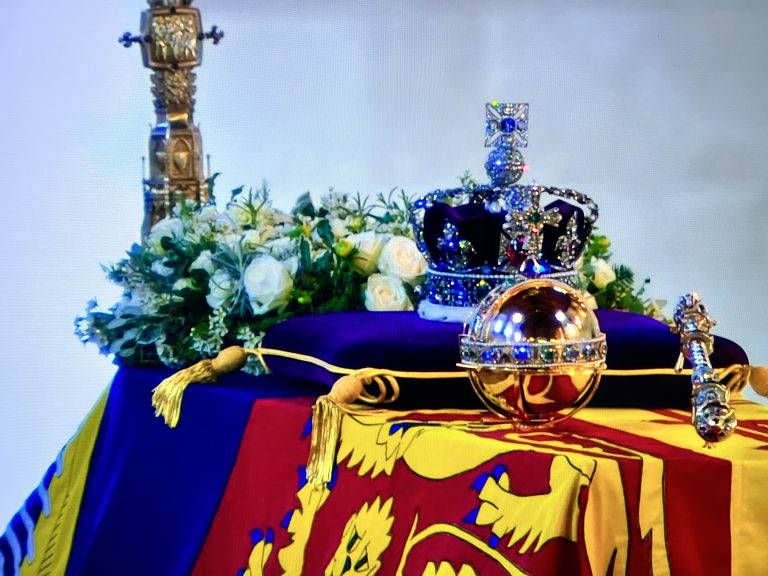
There is so much fascinating history at Hever castle, isn’t there? And beautiful grounds too!
I can only imagine how wonderful it would be to spend Christmas here.
Absolutely1 It has to be one of the top Tudor places to visit ???